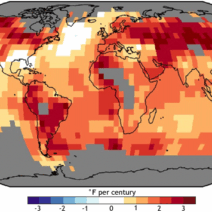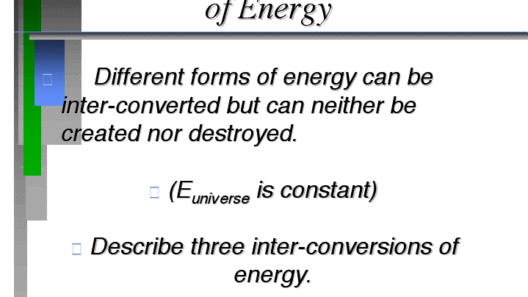In an era where climate change is a pressing concern, finding ways to conserve energy and reduce emissions has become essential. One effective method, often underappreciated, is carpooling. How does carpooling conserve energy? This deceptively simple practice holds transformative potential for our environmental impact and necessitates broader adoption in our daily lives.
On the face of it, carpooling seems straightforward. It’s about sharing a vehicle to travel to common destinations, be it work, school, or leisure activities. But the implications of this practice extend far beyond convenience. Picture this: a busy urban neighborhood with each family owning multiple vehicles, each idling in traffic during rush hour. Now, suppose those families decided to form carpool groups. Suddenly, the chaotic scene of congestion morphs into a more organized and efficient flow of traffic. The reduction of single-passenger cars not only decreases the number of vehicles on the road but also lessens fuel consumption, ultimately conserving precious energy resources. Isn’t it intriguing to think about the collective impact of such a simple decision?
The most apparent energy-saving benefit of carpooling lies in its fundamental structure—fewer vehicles mean less fuel consumption. According to various studies, a carpool can decrease the use of gasoline significantly, benefiting both the environment and the wallet. When a single car transports four people instead of four vehicles carrying one person each, the savings in fuel and emissions becomes starkly evident. It’s an effective way of reducing the carbon footprint associated with transportation—a sector that contributes significantly to global greenhouse gas emissions.
Moreover, carpooling enhances ride-sharing efficiency, thereby maximizing the energy used per trip. When individuals or groups coordinate their travel to share the ride—which often involves leveraging smartphone apps and dedicated platforms—the average distance traveled per person is reduced. This slight modification in behavior can lead to substantial reductions in vehicle emissions. Imagine how impactful it could be if cities encouraged and incentivized carpooling through reduced tolls or designated carpool lanes. Are we ready to embrace such intuitive strategies to mitigate our environmental challenges?
Let’s take a moment to consider the environmental ramifications beyond reduced fuel consumption. Carpooling also contributes to decreased air pollution. Fewer vehicles on the road translates to less exhaust and particulate matter polluting the air we breathe. Urban areas, particularly, face dire air quality issues exacerbated by high traffic levels. By embracing carpooling, we can significantly alleviate the smog and haze that plagues many city landscapes. This shift offers not just an ecological benefit but also improves public health, promoting a higher quality of life for residents.
However, the benefits of carpooling extend into the social fabric of communities as well. Engaging in carpooling can foster a sense of camaraderie among participants. Sharing transportation leads to new social connections and potentially reinforces community ties. People often overlook the human aspect of travel. Carpooling creates opportunities for collaboration, conversation, and shared experiences, making an otherwise mundane commute a chance for relational growth. Isn’t it fascinating how transportation might cultivate human connection while conserving energy?
But let’s face a challenge: How do we encourage a larger segment of the population to adopt carpooling practices? Changing habits can be daunting. Our fast-paced lives often prioritize convenience over collaboration. To tackle this, effective strategies must be developed and promoted. First, establishing reliable carpool networks is crucial. Cities and organizations can facilitate app-based solutions that enable users to easily find carpools, vertically integrating this mode of travel into the everyday lives of commuters.
Another significant opportunity lies in educating the public about the environmental benefits of carpooling. Campaigns that articulate the tangible advantages—both ecological and economic—could shift perceptions. Highlighting success stories of organizations or local governments that have successfully implemented carpooling initiatives could serve as powerful motivators. When individuals witness the success of their peers, it triggers a desire for participation. Consider hosting community challenges centered around carpooling where rewards are given for the most participants or miles saved.
Additionally, businesses play a pivotal role in promoting carpooling among employees. Organizations can offer incentives such as flexible work hours, reserved parking for high-occupancy vehicles, or public transportation subsidies for those opting to carpool. This not only fulfills corporate social responsibility but also attracts environmentally-conscious talent who value sustainable practices.
As we traverse the path toward a more sustainable future, we must view carpooling not just as an alternative but as a necessity. The way it conserves energy and fosters community makes it an indispensable practice in our toolkit against climate change. While the challenge of altering societal habits is significant, the rewards supported by evidence and community engagement offer a ray of optimism.
Can we, as individuals, join the movement to make carpooling a common practice? By doing so, we will not only conserve energy but also build stronger communities, foster collaboration, and contribute toward a cleaner, healthier planet. This is not merely an invitation; it is a call to action. As we grapple with the realities of climate change, let’s commit to adopting sustainable travel methods that resonate through our ecosystems and communities, creating a greener world for generations to come.






